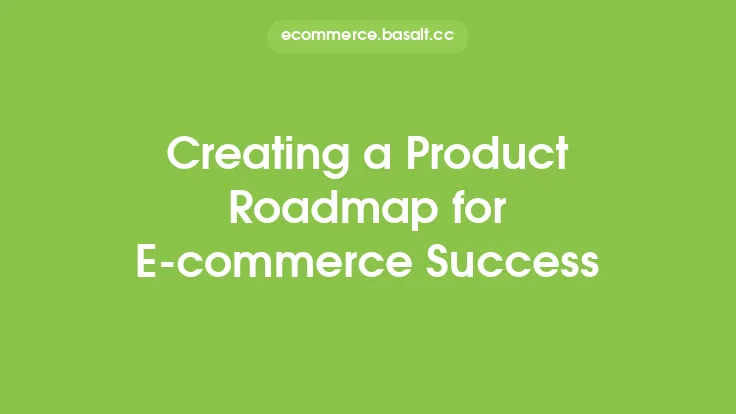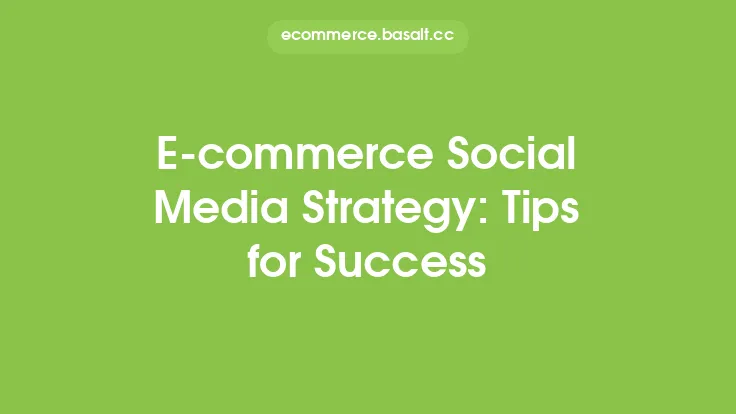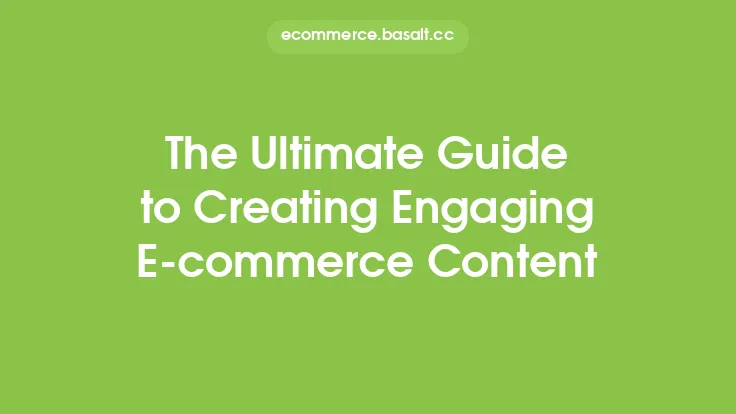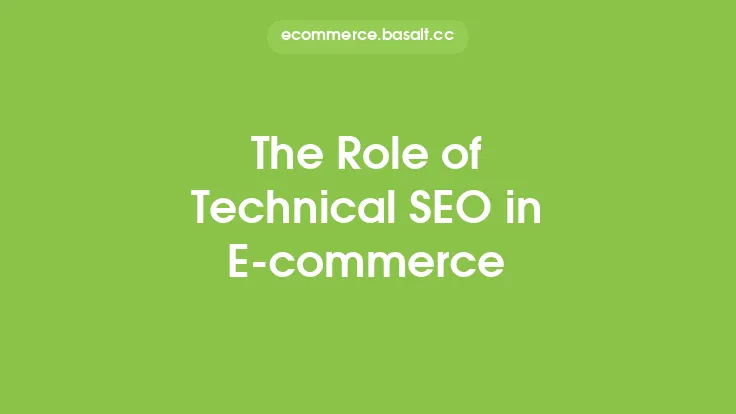In the world of e-commerce, having a solid online presence is crucial for driving sales and revenue. One of the most effective ways to achieve this is by implementing a well-planned e-commerce SEO strategy. Search Engine Optimization (SEO) is the process of optimizing your website to rank higher in search engine results pages (SERPs) for specific keywords and phrases. A good e-commerce SEO strategy can help increase visibility, drive organic traffic, and ultimately boost conversions. In this article, we will delve into the key components of creating an e-commerce SEO strategy that drives results.
Understanding Your Target Audience
To create an effective e-commerce SEO strategy, it's essential to understand your target audience. This includes identifying their demographics, interests, behaviors, and pain points. By knowing your audience, you can tailor your content and optimization efforts to meet their needs and preferences. Conducting market research and analyzing customer data can help you gain valuable insights into your target audience. This information can be used to create buyer personas, which are fictional representations of your ideal customers. Buyer personas can help guide your SEO efforts and ensure that your content resonates with your target audience.
Setting Clear Goals and Objectives
Before creating an e-commerce SEO strategy, it's crucial to set clear goals and objectives. What do you want to achieve through SEO? Are you looking to increase organic traffic, boost conversions, or improve brand awareness? Establishing specific, measurable, achievable, relevant, and time-bound (SMART) goals can help you stay focused and motivated. Your goals and objectives should align with your business objectives and be regularly monitored and adjusted. This will help you stay on track and make data-driven decisions to optimize your SEO strategy.
Conducting Keyword Research
Keyword research is a critical component of e-commerce SEO. It involves identifying the keywords and phrases your target audience uses to search for products or services like yours. By conducting thorough keyword research, you can identify relevant and high-traffic keywords to optimize your website for. This can be done using various tools and techniques, such as Google Keyword Planner, Ahrefs, or SEMrush. It's essential to focus on long-tail keywords, which are more specific phrases with lower competition and higher conversion rates. By incorporating relevant keywords into your content, meta tags, and product descriptions, you can improve your website's visibility and drive more targeted traffic.
On-Page Optimization
On-page optimization refers to the process of optimizing individual web pages to rank higher in search engines. This includes optimizing elements such as page titles, meta descriptions, headings, content, and internal linking. By optimizing these elements, you can improve your website's crawlability, indexability, and overall user experience. It's essential to ensure that each page is optimized for a specific keyword or phrase, and that the content is high-quality, engaging, and informative. On-page optimization is an ongoing process that requires regular monitoring and adjustments to ensure that your website remains optimized and competitive.
Technical Optimization
Technical optimization is a critical aspect of e-commerce SEO that involves optimizing your website's technical aspects to improve its crawlability, indexability, and overall performance. This includes optimizing elements such as page speed, mobile responsiveness, SSL encryption, and XML sitemaps. By ensuring that your website is technically sound, you can improve your website's visibility, drive more traffic, and increase conversions. Technical optimization requires ongoing monitoring and maintenance to ensure that your website remains optimized and competitive.
Content Creation and Marketing
Content creation and marketing are essential components of e-commerce SEO. High-quality, engaging, and informative content can help attract and retain a clearly defined audience, drive organic traffic, and increase conversions. By creating content that resonates with your target audience, you can establish your brand as an authority in your industry and build trust with your customers. Content marketing involves promoting your content through various channels, such as social media, email marketing, and influencer marketing. By leveraging content marketing, you can increase your website's visibility, drive more traffic, and boost conversions.
Link Building and Outreach
Link building and outreach are critical components of e-commerce SEO that involve acquiring high-quality backlinks from authoritative sources. Backlinks can help improve your website's authority, drive more traffic, and increase conversions. By building relationships with other websites, blogs, and influencers, you can acquire high-quality backlinks that can help improve your website's visibility. Link building and outreach require ongoing effort and maintenance to ensure that your website remains competitive and authoritative.
Tracking and Measuring Performance
Tracking and measuring performance is essential to evaluating the effectiveness of your e-commerce SEO strategy. By monitoring your website's traffic, rankings, and conversions, you can identify areas for improvement and make data-driven decisions to optimize your strategy. Google Analytics and other SEO tools can help you track your website's performance and provide valuable insights into your target audience. By regularly monitoring and adjusting your SEO strategy, you can ensure that your website remains optimized and competitive, driving more traffic, and increasing conversions.
Staying Up-to-Date with the Latest Trends and Best Practices
Finally, it's essential to stay up-to-date with the latest trends and best practices in e-commerce SEO. The SEO landscape is constantly evolving, with new algorithms, technologies, and techniques emerging regularly. By staying informed and adapting to these changes, you can ensure that your website remains optimized and competitive. This can be done by attending industry events, following SEO blogs and news sites, and participating in online communities. By staying ahead of the curve, you can drive more traffic, increase conversions, and establish your brand as a leader in your industry.





